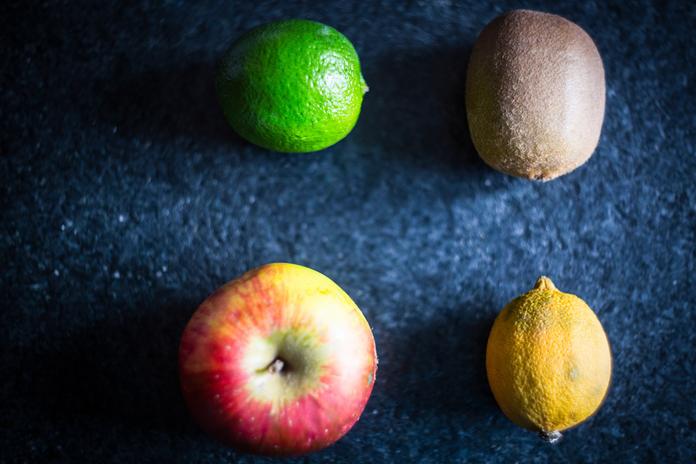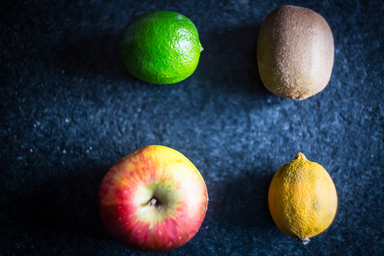Gooey macaroni and cheese. Juicy filet mignon. Warm fudgy brownies. The options in today’s dining halls are less cafeteria-style and more cruise ship-style—tons of a la carte options available in limitless portions. This may please our cravings but it’s easy to go overboard. Instead of abandoning ship, stick to these ten sneaky tips, and keep the extra pounds off.
1. Feast with fat:
“I always opt for low fat yogurt instead of fat free—the fat keeps you full longer,” says
2. Mix and match:
“I really like to cook so I like to be creative with the healthy options instead of getting bored,” says Katherine McKenna, a sophomore at
3. Go Online:
Most college dining halls have menus available online and some even offer the calorie counts and nutritional breakdowns of the menu items for the day. “Planning is key to any weight loss routine,” says Tucker. If you check the options in the dining hall and plan a healthy meal, you’re less likely to be tempted to splurge on something. Viewing the menu online may make you aware of some calorie catastrophes that you once considered healthy food. “I just learned that the pecan pie had 500+ calories in a serving,” says Stephanie, a senior at Harvard University. Now you know to skip it, or at least budget for it.
4. Bring some extras:
“When I lived on campus, I used to bring my own nonfat salad dressing because sometimes dressing can add up to 200 calories to a salad,” says Nikki Fig, an HC intern and student at Emerson College. “And that’s supposed to be the healthy part of the meal!” College dining halls may have a plethora of options, but some healthy favorites can be left out. The key is to take advantage of the healthy ingredients in the dining hall, while incorporating some add-ons to add nutrition, flavor, and variety to your meals. Bring a low-calorie pita to pair with a salad, hummus to dip pretzels in, or even spices to dress up baked chicken and fish.
5. Rethink dessert:
Sometimes we all need something sweet to finish off our meal, but that doesn’t mean you need to hit up the froyo machine or baked good station. Swap refined sugary treats for natural sugars to satisfy your craving without a wrecking calorie disaster. “I eat a banana with a spoon, that way it tastes like dessert,” says Danica Ramsey-Brimberg, a sophomore at
Another great swap for dessert is replacing ice cream with Greek yogurt, which has a thicker, creamier texture than regular yogurt. “Greek yogurt mixed with fruit, honey, or a few chocolate pieces makes a decadent, yet healthy dessert,” says Maryanne Roche, a senior at Northeastern University. Better yet, a study in the Journal of Obesity Research even linked yogurt consumption with weight loss, specifically the loss of belly fat. Whittle your middle away and pack in some calcium with yogurt! If your dining hall doesn’t have Greek yogurt, regular yogurt is a good option too.
6. Have fun with fruit & veggies:
“I always try to add a little bit of fruit or vegetables to everything I eat,” says Jayne Croteau, a sophomore at
7. Embrace Eggs:
“I try to have protein for breakfast, because it keeps me full until lunch,” says Cassie Gleed, a senior at Northeastern University. “Veggie omelets, peanut butter and toast, and Greek yogurt are my favorite picks.” In a 2007 study conducted at Pennington Biomedical Research Center, researchers compared weight loss in women who ate either two eggs or a bagel for breakfast. The two breakfast meals were identical in calories and volume. “Compared to the bagel eaters, overweight women who ate two eggs for breakfast five times a week for eight weeks as part of a low-fat, reduced-calorie diet, lost 65% more weight, reduced waist circumference by 83%, [and] reported higher energy levels,” reports researcher Nikhil V. Dhurandhar,
8. Stay Fresh:
“If I get an entree, I pair it with veggies from the salad bar instead of the buttery veggie sides that come with the meals,” says Danica. Sticking to the salad bar ensures that you can control the topping’s limiting calories and fat. It’s also more nutritious. According to WebMD’s Louise Chang, MD, the cooking process can leech veggies of essential vitamins and antioxidants. So, it’s wise to steer toward raw, undressed veggies and fruits for optimal nutrition. Similarly, choosing whole fruits or veggies over juices and smoothies is the better option. According to Mypyramid.gov, a 16-ounce bottle of OJ or apple juice can have almost 55 grams of carbohydrates, the equivalent of five slices of bread. And most of that is sugar—a whopping 12 spoonfuls of it! The raw fruit version delivers more fiber and fewer than ten grams of natural sugars; the combination keeps you full and your blood sugar steady. That means no energy crash halfway through class—or an impromptu run to the vending machine.
9. Creative Condiments
Fruits and vegetables can also take the place of condiments, delivering flavor and fiber without the fat or calories of traditional toppings, according to WebMD’s Chang and Elaine Magee, MPH, RD. A tomato is a great substitute for ketchup. Avocadoes can deliver the creamy texture of mayonnaise. Salsa is a great low-calorie topper for meats, fish and salads. “I usually put fruit in my salad to take the place of dressings—raspberries, apple slices, even Craisins taste great,” says Kelly Fischietto, a senior at
10. Schedule Splurges:
“I plan to have ice-cream every Friday afternoon as an end of the week treat,” says Jennifer Weber, a senior at UMass Lowell. “Since I know I’ll have it then, it’s a lot easier to resist the temptation during the week.” Allowing yourself treats is an important part of any diet and prevents future binges in the long run. “Denying a craving or occasional treat can result in ‘eating around’ the desire and potentially doing more damage to your energy equation than if you just indulged in the first place,” says Tucker. “Have a small portion of a treat, split it with a friend, or balance out indulgences over several days with a bit more activity.” It is all about balance.
These tips are easy ways to watch your portions and eat more balanced meals, but don’t stop there. A key to keeping off the pounds is maintaining an active lifestyle. Check out these great workouts and refer to this quick toning guide that can be done while at school to eat healthy and get fit.
Sources:
Sheila Tucker, MA, RD, LDN, Administrative Dietitian, B.C. Dining
WebMD’s Elaine Magee, MPH, RD. and Louise Chang MD
Nikhil V. Dhurandhar,
Mypyramid.gov
College students from across the country

